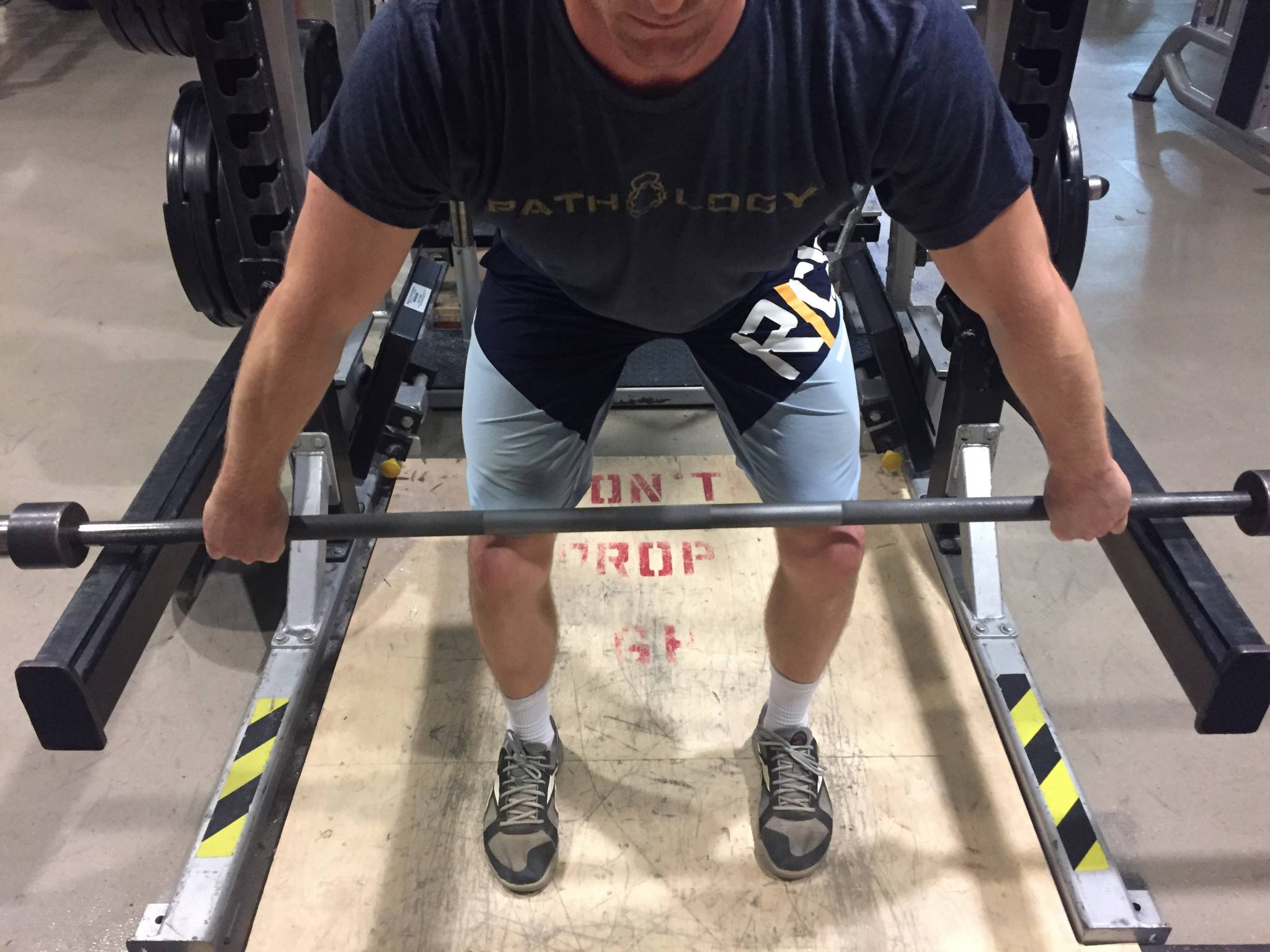The “Knees Out” Epidemic
“Push those knees out…” This cue has almost become as commonplace as any within the crossfit community. So, if everyone is saying it, it must be right…right?
First and foremost, let me preclude this short article by saying that I am not an expert in olympic lifting instruction. To be an expert, I’d need thousands upon thousands of hours of experience, whether coaching or competing (or some combination of both). What I have is a few solid years of experience and a love to crunch on technique and learn new ways to improve my technical and functional movements. If you want to hammer down on some Olympic lifting form and technique, go check out www.catalystathletics.com. Greg Everett has been a great resource for all things Oly, and I’ve enjoyed learning from his articles and quality info over the last few years.
With all that being said, I can say that I have a solid background in anatomy, biomechanics, kinesiology, and functional movement execution (thanks to the opportunity to sink my teeth into PT school starting two years ago). If you want to start talking about deficiencies in movement patterns and the problems they might cause, then I’d love to chat.
Back to the knees out epidemic…
First and foremost, one coaching cue cannot possibly be the best option for everyone. The faster coaches accept this, the more quickly they can become more dynamic in progressing their athletes (or patients). Mentally and physically, each person responds differently to different cues. Observing problems with how people move is not often the most difficult part of the coaching process; the difficulty comes in figuring out the best drill or cue to allow the athlete or patient to fix it.
So, how did the knees out cue come to be?
The leading thought behind the cue is that if the athlete pushes their knees out during the entirety of the squat, it will largely eliminate the propensity to dive into a valgus position (knee collapse), which is detrimental to the athlete’s performance and knee health. Keeping the knees out will theoretically ensure that the glutes are engaged, the posterior chain is active, and the athlete will produce more hip drive out of the bottom of the squat. Applied to the pull phase of some of the major Olympic lifts (snatch and clean), this outward knee position is preached to improve the stretch reflex in the hamstrings and allow for a more explosive vertical movement of the barbell (#moreweight).
So why is this a problem?
Foot in Full Contact with the Floor with External Rotation at Hip/Knee, Stable, with Full Tension and Activation of Post Chain

Hanging on the Lateral Part of the Foot with Forced Knees Out, Tracking Outside of the Feet, and Losing Tension in Post Chain

With this massive emphasis on knees out, I have begun to see a large number of athletes (in daily WODS, at competitions, etc.) that are hanging on the outside of their feet. If you are looking to produce maximum force, there is absolutely no way that the medial aspect of your foot should be leaving the ground. When this happens, you’ll lose dorsiflexion at the ankle and increase stress on the hip to reach full depth in your squat, decrease the ability to load your posterior chain in oly lifts, and decrease the surface area to transfer force in all lifts. Rather than dynamically using the full foot and a solid base, people are dumping power at the foot and ankle. These lifts hinge on a solid base, and by using only the outer half of the foot, it’s like building a pyramid backwards. I’ve never seen a small forward take off to dunk a basketball or a short-stop set up to make a defensive play with the medial half of their feet off the ground, and there’s a reason for it-it’s not athletic.
A better cue in most instances might be to “screw the feet into the ground.” By focusing on this external rotation movement rather than “knees out,” many athletes can better understand and build motor control in turning on the posterior chain and externally rotating the tibia, while also maintaining dynamic stability in the ankle with the whole foot on the ground. The knee simply needs to track over the feet, not further out than that. Therefore, when this cue is understood, the athlete will still decrease the dreaded knee collapse, while also ensuring a proper base and foundation to generate torque at the hip.
The difference can look pretty subtle, but coming from someone who has worked through this problem personally, it makes a major difference. If the “knees out” cue works for you, then continue to focus on it; however, if it is causing some bad positioning in the feet, try to focus on externally rotating each lower extremity with the feet staying flat on the ground and see how it feels. You may find that you feel not only much more stable, but also much more powerful as well.
Regardless, coaches need to be much more aware that technique can be largely effected by not only anatomy and training background, but also coaching cues as well.
There is no cookie cutter technique, and there is no cookie cutter cue to that will fix every athlete’s problems.
Keep your whole foot on the ground, allow those knees to track over the feet, and knock down a new personal record. Don’t sacrifice your force generation by trying to achieve some mythical over-exaggerated knee-out position because it’s become a new catch phrase in the fitness community.
Quality Resources to Check Out:
http://www.thebarbellphysio.com
http://www.catalystathletics.com
http://www.athletespotential.com
http://www.clinicalathlete.com
I would learn to generate some discussions or feedback! Feel free to post or contact us with your own pictures or ideas. We love to hear and discuss new ideology and theories! It’s all a learning process… #studentfirst
Tyler Vaughn
CSCS, SPT
Owner, Pathology Apparel
Pathology Performance
#morethanabrand
